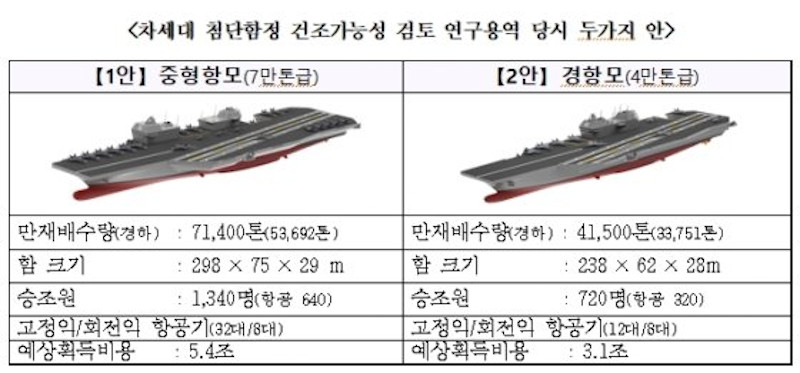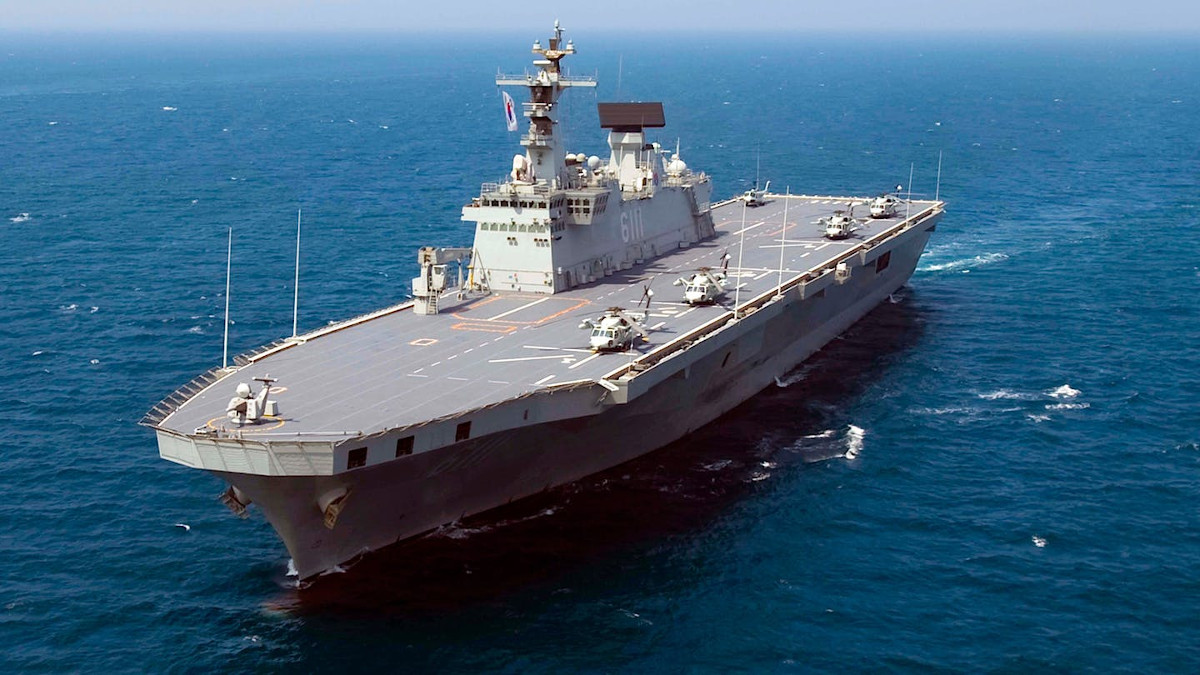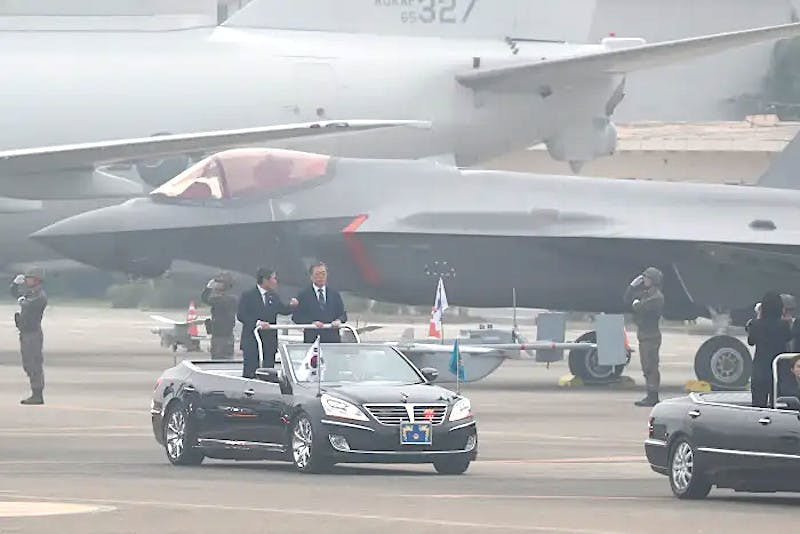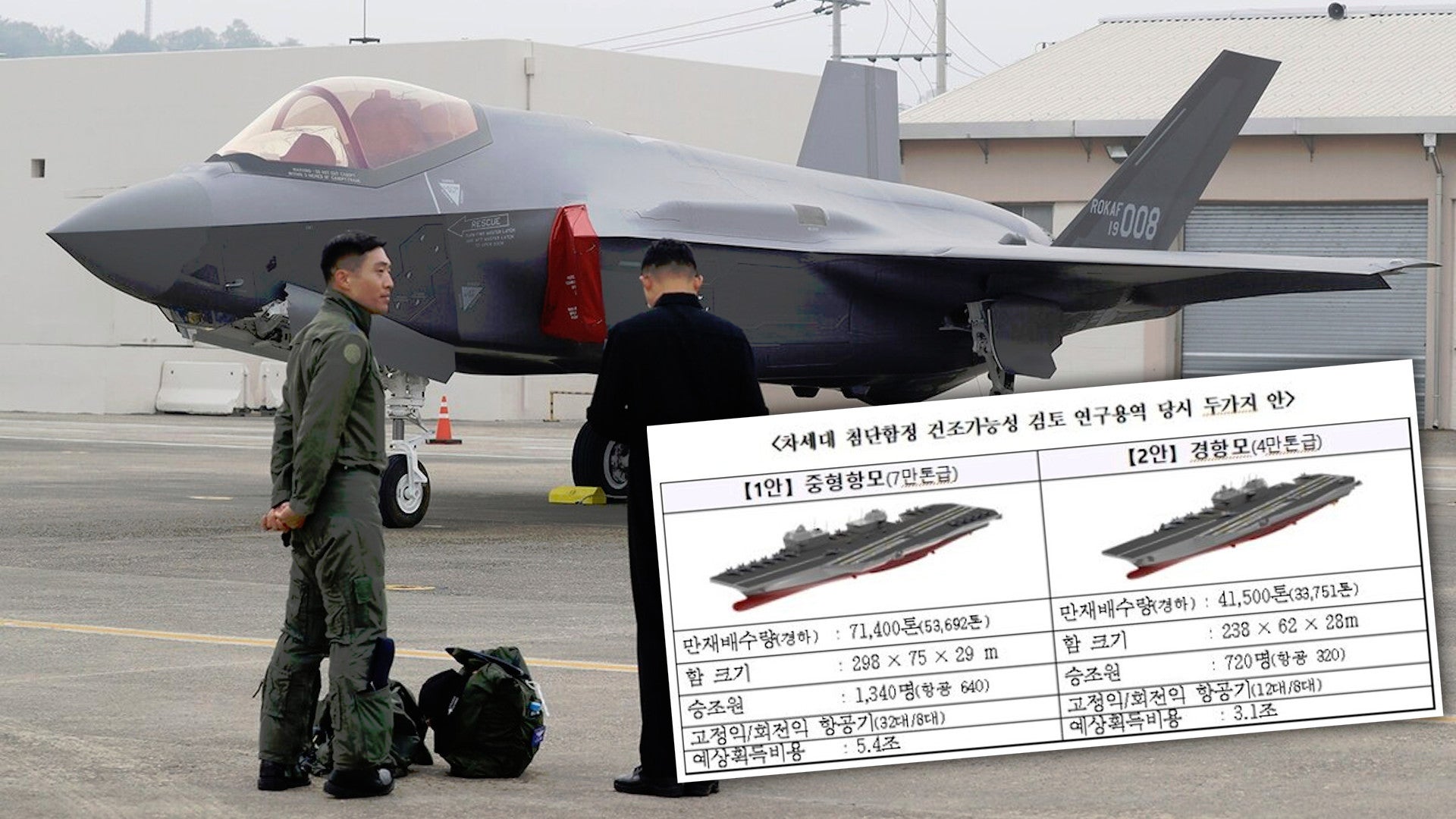A senior South Korean lawmaker has said the country should reconsider proposals for acquiring either light or medium aircraft carriers with Catapult Assisted Take-Off Barrier Arrested Recovery, or CATOBAR, configurations to respond to growing regional security threats. These were alternatives to South Korea’s reported decision to purchase a number of large amphibious assault ships capable of supporting fixed-wing short takeoff and vertical landing combat jets, namely the F-35B Joint Strike Fighter. This call for reassessing that choice comes as the South Korean Ministry of Defense may be leaning toward acquiring 20 more conventional F-35A models rather than B variants, further deferring plans to develop a fixed-wing naval aviation capability.
Choi Jae Sung, a member of South Korea’s leading Democratic Party, who reportedly has a close relationship with President Moon Jae In, made his pitch for buying more traditional aircraft carriers in a white paper that the National Assembly’s National Defense Commission on the Navy and Air Force distributed earlier this year, according to South Korean newspaper Money Today. On Oct. 7, 2019, the country’s Defense Acquisition Program Administration told the National Assembly that the Ministry of Defense was planning to spend approximately $3.3 billion on around 20 new F-35s, but did not specify the variant, according to Defense News.
Choi’s report included details on the two CATOBAR aircraft carrier concepts that the South Koreans have previously considered. One of these would be almost 978 feet long and displace approximately 71,400 tons, around the same general size as China’s Type 001A carrier, which has a Short Take-Off Barrier-Arrested Recovery (STOBAR) configuration with a ski jump rather than catapults. The other proposal was around 41,500 tons displacement and just under 788 feet long, making it just slightly smaller than France’s Charles de Gaulle, which does have a CATOBAR configuration.
The larger of the two designs would have a full crew complement of 1,340, not including members of the air wing, which would consist of 32 fixed-wing combat jets and eight helicopters. The smaller carrier concept would only need half as many crew members, but would only trim back the number of fixed-wing aircraft to just 12. For comparison, Charles de Gaulle with its 1,350 crew typically sails with an air wing with another 600 personnel and at least 28 aircraft and helicopters, including E-2C Hawkeye airborne early warning and control aircraft.

Money Today‘s report did not include any additional information about what other systems, including radars or self-defense suites, that South Korean officials might have been considering for these ships. It is also worth noting that at present, only two other countries in the world, the United States and France, operate CATOBAR carriers.
Brazil formally retired its CATOBAR carrier, the São Paulo, in 2017, and put her up for auction last month. China is reportedly considering constructing its future Type 002 and Type 003 carriers in this configuration. The People’s Liberation Army Navy’s existing carrier Liaoning, as well as the aforementioned new Type 001A, which has not formally entered service and that experts say may be experiencing complications of some kind, both use ski jumps rather than catapults. China’s developments were a major driver in Choi’s call for larger South Korean carriers.
“In view of the current military expansion rate of major Northeast Asian countries, the future battlefield in 2033 will be very different from what it is now,” Choi wrote. “You should review your plan changes.”

In July 2019, reports had emerged that South Korea was moving forward with a plan to develop a 30,000-ton displacement amphibious assault ship, known as the LPH-II, with a ski jump that could potentially support more robust fixed-wing combat jet operations. Choi had complained that “tactical limitations are a concern” even with the proposed 41,500-ton displacement light carrier, adding that he felt a ship that size might not even be suitable for a CATOBAR configuration. Of course, France’s Charles de Gaulle would suggest otherwise.
The U.S. Navy has been faced with similar questions regarding fixed-wing focused concepts of operation for its existing Wasp class amphibious assault ships, even though these ships displace 10,000 tons more than the proposed LPH-II. You can read more about the various factors involved in this past War Zone piece.
Choi also noted that the decision not to pursue true carriers now could have impacts on how long it might take to acquire suitable aircraft, such as the carrier-specific F-35C, which is only in service with the U.S. Navy at present, should South Korea change course in the future. As noted, the country’s Ministry of Defense is looking to buy an additional 20 F-35s, but has not decided on what variant to buy, in part due to the questions about possible ship-board operations. The short takeoff and vertical landing B variant would be best suited to the LPH-II plan. They could also potentially fly from South Korea’s existing Dokdo class amphibious assault ships, if major modifications could be made, as well as support distributed operations on land, concepts of operation that you can read about in more detail in these past War Zone stories.

However, “the state-funded Korea Institute for Defense Analyses, or KIDA, has concluded a study on the additional acquisition of F-35 aircraft, and the study is to suggest the introduction of more F-35As be more feasible,” an unnamed Ministry of National Defense source had told Defense News. “There are two issues [with buying] the F-35B. First, it’s more expensive than the conventional-takeoff-and-landing version. Second, the deployment of a carrier-type landing ship is far away from now.”
Cost was also reportedly a factor in choosing the LPH-II proposal over the CATOBAR carrier concepts, as well, according to Choi. Still, the legislator’s position may increasingly resonate with other South Korean officials, including President Moon. “Our military’s iron-clad security supports dialogue and cooperation, and enabled [the country] to boldly walk toward permanent peace,” the South Korean president had said on Oct. 1, 2019, during a ceremony to mark the country’s Armed Forces Day. The South Korean Air Force’s F-35As were also a prominent feature at that event.

South Korea is facing the prospect of renewed belligerence from North Korea, which has been testing increasingly threatening ballistic missiles and other weapons in recent months. The regime in Pyongyang notably fired a new submarine-launched ballistic missile on Oct. 2, 2019, the first such test in three years. It was also the longest-range ballistic missile test since North Korean Premier Kim Jong Un had announced a self-imposed moratorium on long-range missile and nuclear weapons testing in 2017.
With U.S.-North Korean relations cooling off again after a recent thaw, South Korea may also need to reassess its regional security priorities. On Oct. 10, 2019, North Korea even renewed its threat to abandon the testing moratorium entirely if it does not feel sufficient progress is being made in negotiations with the United States.
At the same time, South Korea has been increasingly faced with broader security challenges when it comes to China, as well as Russia, who are increasingly cooperating militarily in northeast Asia and the Pacific region, as a whole. Just this week, the South Korean government announced that it was in talks to establish new security hotlines with the Chinese and Russians to try to avoid dangerous altercations around disputed boundaries. Though Russia disputes the account, South Korea claimed that its fighter jets had fired warning shots at Russian combat aircraft flying around contested islets in the East Sea in July.

On top of all this, the South Koreans are embroiled in a serious trade and political dispute with the Japanese, despite the two countries being treaty allies. In August, South Korea notably ended an intelligence-sharing agreement with Japan.
All told, South Korea may be facing new questions about how it intends to secure its interests in its immediate neighborhood, as well as project power regionally and potentially beyond as time goes on. Whether or not the government in Seoul will decide that aircraft carriers and aircraft to go with them are essential to meeting those demands, as Choi argues, remains to be seen.
Contact the author: joe@thedrive.com
